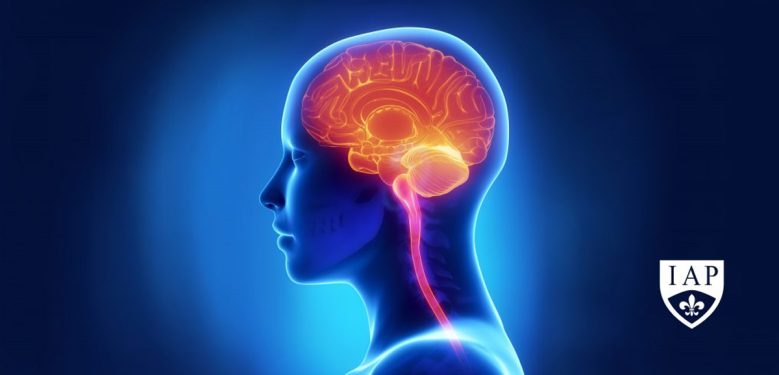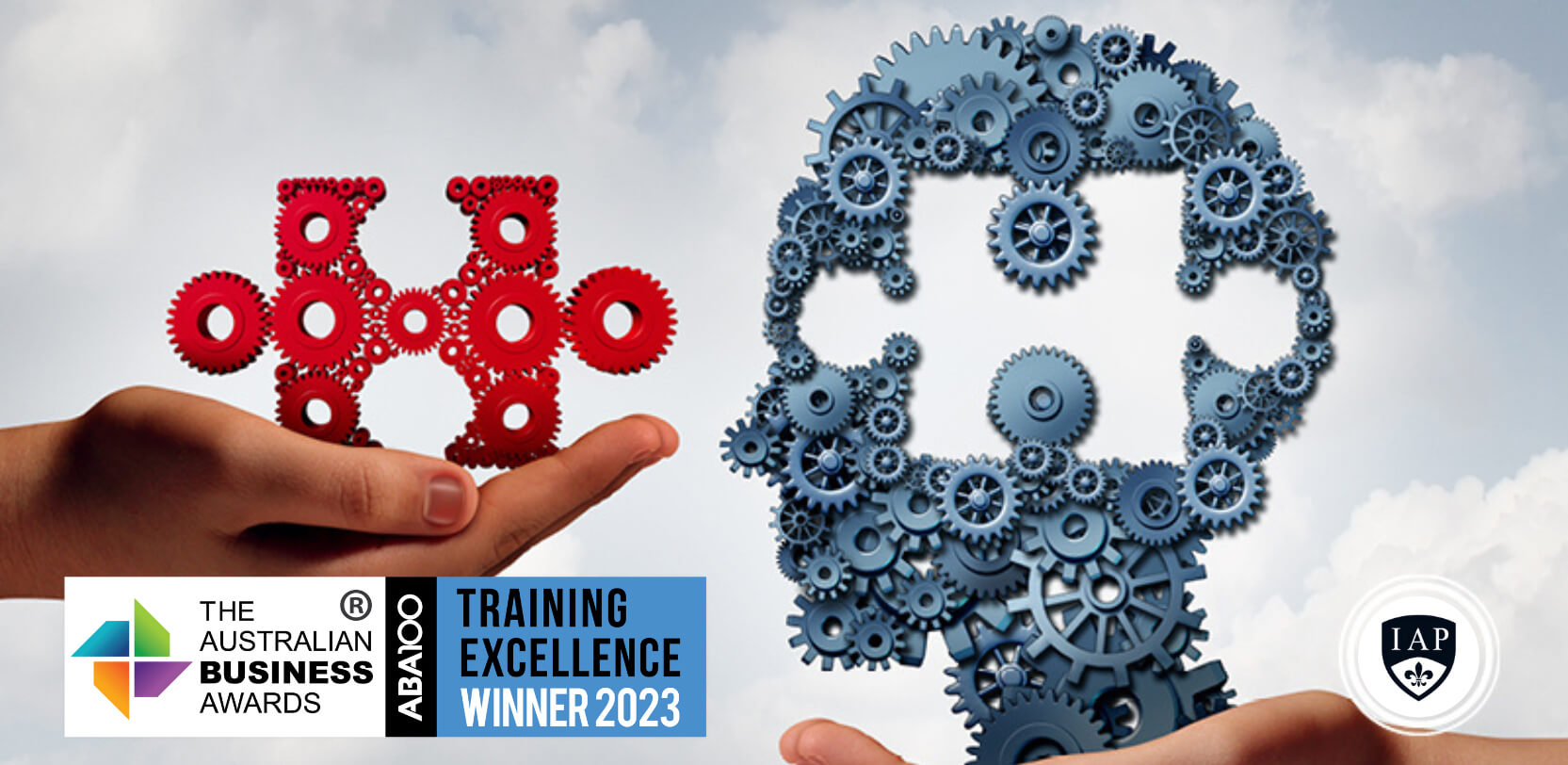Does NLP work?
Does NLP work and is it effective?
Written by Gordon Young
Does NLP work? Really?
Let me begin by saying Neuro Linguistic Programming (NLP) has enormous benefits for both personal and professional applications. NLP was derived by modelling the most successful people and practices in the world, and the NLP promise is that virtually any problem you have or any dysfunctional pattern you run, is malleable. That you can recreate this pattern in any way you wish, and that your past does not have to be an indicator of the future. For some people, a simple way to think about NLP is a set of techniques that can reprogramme your nervous system through the use of language.
How did NLP come about?
NLP was created by Richard Bandler and John Grinder in the Santa Cruz Mountains in 1976. Now, Richard Bandler was a mathematician. He studied formulas. He was actually the teaching assistant for John Grinder who was a linguist, and he studied the structure of language.
These two got together and posed a question.
“What if we could find a way to model what people who are really effective with communication do, reproduce that model, and teach it to other people?”
So Bandler and Grinder studied three people in particular. They modelled Fritz Perls who was a Gestalt therapist, Virginia Satir who was a family therapist, and Milton Erickson who was a hypnotherapist, and therein lies the connection between NLP and hypnosis, one of the many connections that we’ll come to find out.
Now, there are two ways that you can think about Neuro Linguistic Programming or NLP.
The first way is as a set of modelling tools that you can use to observe, model, and reproduce excellence in any field. And the second way is a set of processes that have been archived over the years as a result of that modelling process so down the road, we’ll be talking about different processes such as Submodality Shifts or Strategy Elicitations. There are also specific techniques to shift beliefs.
How does NLP work and how can it improve your life?
You might have noticed that for most, as we get increasingly stressed with a situation, or our bandwidth shrinks. Our ability to be eloquent or creatively tackle an issue diminishes, and our ability to communicate effectively or purposefully gets more and more constricted as negative emotions take over.
Neuro Linguistic Programming amplifies your ability to manage your own internal ‘state’, how you self-regulate. It’s great for helping you to stay resourceful during normally stressful times, be it personal or professional contexts, and it gives you a high degree of behavioural flexibility in difficult situations.
Does NLP work in my daily life?
NLP can really dramatically increase the speed with which you learn. Imagine if you knew how to learn in the most efficient way? Imagine if your internal neurological software was that efficient that you can just pick up new knowledge (that you are interested in) in half the time. Well, you can have that.
It also helps you become a more influential member of your team. Your team could be your family. It could be your friends. It could be your neighbourhood. It could be your networking group. It could be your professional circle. It could be other colleagues that you interact with, the department you head, or the company you run.
Does NLP work as a tool?
NLP works as a tool that you can use to model and reproduce excellence in any field. One of the kinds of landmark modelling cases that was done in the early days of NLP was with Anthony Robbins and Richard Bandler. They were hired by the US government to model the sharpshooting programme, and at the time, it took approximately four weeks to do the training with approximately a 20% pass rate.
Richard and Tony asked for the top five sharpshooters and modelled what they did differently from everyone else.
This included what they did physically and mentally. Their aim was to establish the process by which these elite sharpshooters created the right internal state to be effective.
They discovered that there were common patterns in how these guys spoke to themselves in the lead up to, and when they were taking the ‘shot’. There were commonalities in what they attended to, and what they ignored. There were commonalities in how they set up and what they were perceiving. This information was then collated into a repeatable, teachable process and incorporated into the programme.
As a result, they were able to dramatically reduce the programme’s length and failure rate. Ultimately it became a seven-day programme with more than an 80% pass rate.
A notable presupposition in NLP is that it is the “difference that makes the difference.” Neuro Linguistic Programming is great for identifying what that difference is, modelling it, testing it, and then reproducing it. You can use NLP to model not just something that someone does well, but you can use it to model what some people would consider a pathology.
Does NLP work as a reproducible process?
In NLP virtually everything you do is a process. If you consider obsessive-compulsive behaviour for a moment, most NLPers would contend that nobody has an Obsessive Compulsive Disorder (OCD). They run a learned process of thinking and behaving that we label as OCD, or some might go as far as to say they have an obsessive “personality”. However the problem is not necessarily the behaviour, it is the context in which it is applied. If it is applied to a constant and obsessive need for cleanliness, the individual might end up washing their hands compulsively until they have literally removed vital layers of skin.
Yet that same obsessiveness that most consider a problem has aspects to it that redirected may be very useful. This process has elements to it that demonstrate their ability to maintain long periods of focus to the detriment of other distractions. It shows an ability to be determined and action-oriented. If the same obsessiveness was turned towards their career or a sport they may end up a CEO or an Olympic athlete. In fact, we had a student who had been the runner-up in the World Body Building Championships two years running, and when we were discussing this, he noted that he had decided as a teenager that he needed to do something useful with his obsessiveness and turned it into bodybuilding.
Apart from the corporate training and public NLP Courses we run, I also head up a therapeutic clinic called Sydney Hypnotherapists out of our Castlereigh Street Office in Sydney Australia. This is a team of clinicians, some of them psychologists, dieticians and counsellors, all of whom have retrained in my methods. When a client comes in we are looking at assessing what skills this person has and what are they missing in order to produce the undesirable behaviour. Nobody is broken or flawed. The clients are simply misapplying the skill set.
Does NLP work for all?
Our senses pick up information from the world around us. We think we see the world as it is. That reality is just ‘out there’ and all we have to do is show up. That we see it for what it is. This is couldn’t be farther from the truth. The world around us is the territory, but we NEVER see the world as it is. We are limited by our own perceptual filters. The world is so vast and there is just so much information to absorb that we cannot possibly manage it. Out of an estimated 2 million bits of information per second that comes flooding through our senses, that there are only about 134,000 bits that we can actually absorb. (George A Miller Theory of Chunking 1956).
This leads to perceptual deficits. The best we can manage is to create what might be best described as a map of the world. This is how we learn. We essentially store experiences for later use. Once we know a what a door is for, we will have a basic recognition of how to use it even if the door has a different mechanism or look from what we are used to. The downside is, that any map is at best an interpretation of the territory. It is not the territory. A Google street map shows the streets but not the topography, the buildings, or the overall look and feel of the area. It certainly is not going to give you a sense of the style or the community feel of the area, or whether the area is considered safe at night or not. Your brain is trying to do all of this and more.
NLP works with the MAP
So how do we absorb data to construct the map? Well, we take in pictures, we take in sounds, smells tastes, we use touch, and sensation in order to map out what’s going on outside of us. But just like a google map, if you included everything about the area it would become over-complex and unreadable. So our brain runs a simplification filter where we delete, distort, and generalise what we consider is extraneous information. How we do this is determined by our conditioning. Our culture, our values, our beliefs and what we consciously or unconsciously deem to be important to us.
This map is therefore inherently limited, skewed and distorted. It is a tiny version of what’s going on out in the world around us, and it inevitably leads us to inaccuracies and misinterpretations based on our learned biases.
Let me give you an example. There are two people, person A, and person B. Person A runs up to person B and hits them. That’s all I’m going to give you. Notice what you did internally as you read that sentence. You created pictures, maybe even sounds. You created a movie inside your head to process the words you just read on the page. This instantaneous process is actually quite a complex neurological feat. It is also based on your experience. You created an Internal Representation (IR) using the information I gave you.
If you assess your own process you would recognise that you have a library of references you drew on to create that IR. You made split-second assessments as to whether what you created in your mind sufficiently represented what I said. Then you might have also have had a reaction to the violence of the act. Of course, you might also now be aware that I did not specify the level of violence, or in fact, the “hit” was malicious in intent or even playful. A “hit” could be a boisterous slap on the back or the backside. Notice how you are now recalibrating that movie to accommodate new possibilities.
How does NLP work with the projection of intention?
Notice that without information you unconsciously projected the intention, the gravity, and the context. You decided the age, gender and race of the two individuals. You decided where it happened, and approximate time of day (at the very least day or night) whether it was inside or outside. You needed to do all of this because we process in full imagery and you need all of those details to make the movie realistic. You did not create the scene on a green screen so you could add in details later! And recognise that you did it instantaneously. AND, you what you put together could be completely wrong. You simply don’t have enough information to be accurate. You can only run what you deem to be the most likely scenario. If you believe certain races, ages or genders to be more violent, you were more likely to include them as the aggressor. If you believe that certain people are more often the victims of violence, you might have automatically used that archetype. This interpretive style has been learnt and affects every understanding of the world that we have.
What is the point I am making? We so often think we are seeing the world for what it is and we are actually constantly overlaying our own learnt biases over the top of it. We generalise past experiences and make assumptions which we typically don’t check. We actually respond more consistently to our own internal world (our imagination) than to the world around us as it is.
The Neuro Linguistics of meaning
The movies or stories that we write in our minds help us make meaning of things, and how we live our lives is predicated on these arbitrary interpretations we make, often without sufficient information. We mind read and project constantly. Every time you feel anxious about something you are projecting into the future expecting a negative outcome. You can only worry about something that you think will happen, or at the very least, the consequences of what has happened. All anxiety is based on the future and is by definition a fabrication. It is a response to your own imagination. The movie you run. It cannot be accurate because it is not actually happening, but you can still feel the terror as if it is.
But here’s something to consider, the actual physical phenomena of terror and excitement are very similar. The heart rate and blood pressure elevate. Breathe shortens and you become more alert. Blood rushes from the organs to the muscle and bone. The physical sensation you would get if you had made a mistake whilst driving and were on your way over the edge of a cliff potentially to a fiery death is similar to the feeling of that first big drop on a rollercoaster.
NLP works like an optimised internal dialogue
However, our internal dialogue will be different. the way we are interpreting events will be different. One is an experience you will, assuming you survive it, never want to have again. The other might lead you to want to jump back into the queue again and again. What makes something scary is the meaning we attach to it. The problem is what we tell ourselves this event means moving forward.
The butterflies you get when you’re getting ready to get into your first schoolyard fight or confrontation is identical to the butterflies you might get from asking out someone for the first time or asking someone to dance. And so the reason I mentioned that is that the physical sensations going on in your body in and of themselves are never anything to actually be afraid of.
Most of us spend an inordinate amount of time worrying about the future. We do it in both our personal and professional lives. Pessimism, the label we give to the habituated pattern if thinking that projects negativity whenever there is an uncertain situation, is a learnt filter. It is not a response to what is actually happening around you. It is a response to what you expect to happen. You have to keep feeding the fear for it to run. And ironically, it won’t matter how often you are wrong, you will keep the pattern going unless you retrain your brain to do something else.
NLP works like a search engine
A Google search will give you evidence to support almost any fear, bias, or crazy conspiracy theory you can come up with. Whatever we look for we will find. Your brain is, in essence, a search engine. It goes looking for evidence for what it expects to see. Another way of looking at it is like a radio. There is rock, jazz, R and B, classical, rap, hip hop, folk or country and western, or talkback radio. You can choose which station you want to listen to, but the moment you do, you do so to the exclusion of other stations.
So, if we tune into rap it will be a very different set of inputs and feel that if you chose classically.
And this is what we do. We do this whether we are conscious of it or not on a daily basis. The difference is that we know we are choosing a particular station when we are listening to the radio. When we are perceiving the world around us, we think we are listening to the only channel that exists – REALITY.
However, if you believe that people are generally ineffective and it frustrates you enormously, you will consistently find evidence to support your bias. Of course, the truth is you won’t just encounter because of course, ineffectiveness is out there, but you will actually manufacture it by projecting into the situation. The early moments of someone doing something differently from the way you would do it might be enough evidence for you to claim ineffectiveness without having to wait for the results. Your bias has been fed, just as your bias projected who was responsible for the “hit”.
It is in this way that we create the world that we live in. Unfortunately, we only see what we expect to see, and this limits us. It limits the possibilities we are likely to notice. It limits how we interact with others, and who we spend time with. It limits our expectations of ourselves and what we can achieve in our lives.
Does NLP work with our perception of the world?
However, NLP teaches us that it is all just perception and that it is a learnt perception at that. We may not have the power to decide what happens outside of ourselves, but we have the power to decide what we notice, what we give airtime to in our neurology, and how we respond to it all. Moreover, we have the capacity to recognise when we are projecting our historical biases on to the situation and be able to step back from them and become more objective if we are sufficiently self-aware.
NLP teaches us that the way we skew the reality unconsciously is a choice and allows us to reintroduce more choice about what we see. The famous rapid change techniques of NLP can facilitate the dismantling of those less desirable perceptual filters and allows us to become more aware of the array of opportunities in the world.
The best in the world don’t just have skills that most don’t. They see opportunity and possibility where most don’t. They have different filters and this offers them different choices. With NLP we can choose who we are going to be, and how we are going to be in the world, and that our past does not have to equal our future.
Are you ready for a career change? Maybe a coach or a Clinical Hypnotherapist? Then let’s chat about your course pathway by contacting us now.







